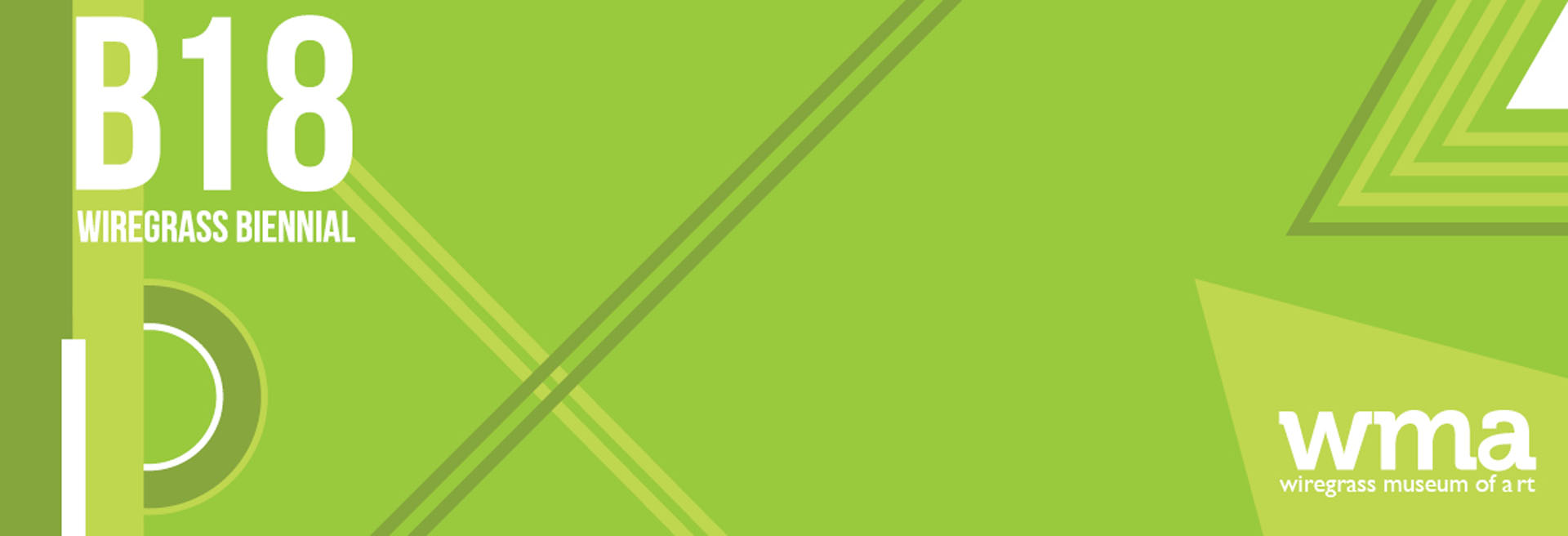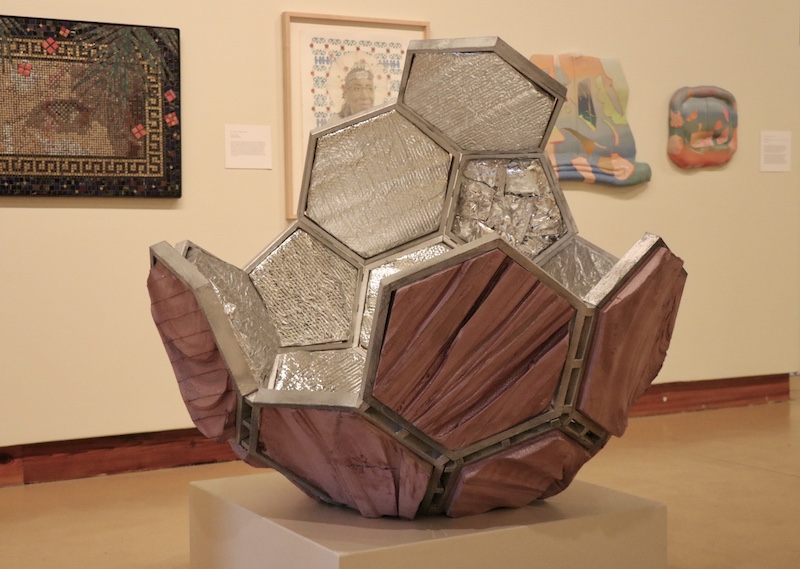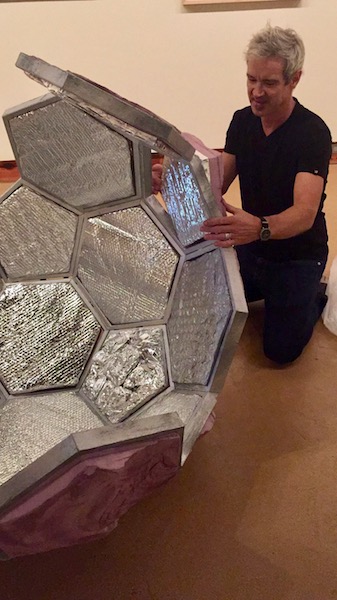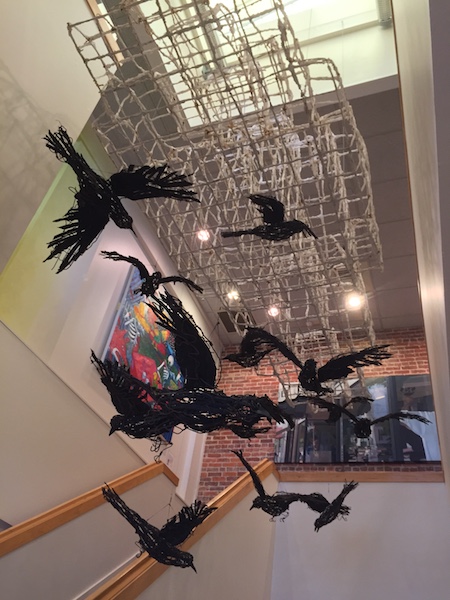
Get to know the artists of ‘B18: Wiregrass Biennial’ – Part 5 (final segment)
WMA asked several of the 41 artists whose work is currently on display in B18: Wiregrass Biennial to answer questions about their artistic practice. This is the last post in our five-part series of B18 artist interviews on the #wmaINSPIRED blog. If you have missed the previous four, you can find them archived on the blog. Thanks for reading!
Randy Gachet – Birmingham, Alabama

Neo-Geode, 2018
Reclaimed expanded polystyrene foam, reclaimed foil/plastic packaging and wood
WMA: Tell us about your work in B18.
My recent work relies on geometric form as a counterpoint to an array of “waste“ materials encountered in my daily orbit. Spherical polyhedral shapes are particularly interesting to me as a modernist, futuristic trope. Constructed from common building materials, the structure of the form allows me to play with the counter material in a way a musician might use a jazz standard or blues progression to improvise upon to create something new and unexpected. My piece Neo-Geode is a tongue in cheek reference to the “Neo-Geo” art movement in the late 1980’s and the geologic structure geode. It is a playful way to consider the shift between geologic time and the rapid clip of technological advancement.

Randy Gachet, installing Neo-Geode in the Main Gallery
WMA: What is your experience working with WMA? Have you shown work at the museum before? How did you hear about the exhibition?
It is a great privilege to say I have been working with WMA for the past decade. It began in 2006 with a dialogue with former WMA director Susan Robertson resulting in a 2007 exhibition of my work. In 2009 WMA acquired my work Steal from the Sky. I also participated as a featured artist in WMA’s Art 24 program that included creating the on-site installation Industrial Sunflowers. My work has also been included in WMA’s B12 and currently in B18.

Steal from the Sky, 2009, Reclaimed tire, wire, and plaster
WMA: Do you often participate in juried group shows like the B18? Why or why not?
I think juried group shows especially those hosted by museums are great building blocks for an artist’s career. It is a great way to garner attention from curators, expand one’s audiences and build up your resume.
WMA: How long have you been making art? Did you grow up in a school system with a strong arts program? Did someone in particular encourage you to develop your practice?
I graduated Birmingham Southern College with a BFA and I have been consistently working at it since then. I feel like I was very fortunate to grow up in a school system that included the arts in its curriculum all the way through high school. My high school art teacher encouraged me to pursue art after high school, but it was really my experience at BSC that encouraged me to develop a practice as an artist. The art faculty, the program and my peers were all instrumental. In particular I would say it was the mentorship of Professor Robert Tucker that had the deepest impact.
WMA: In your opinion, why is it important for communities (both large and small) to have a thriving arts community? Have you chosen to move to a town because of its support of the arts/artists?
I believe the Arts, its practitioners and supporters, are a vital component to a vibrant healthy community whether it be large or small. I do feel it is certainly a greater challenge for smaller communities to foster a thriving art community.
WMA: Where do you find inspiration? What (Who) has the most influence on the art you make?
My fascination with materials, particularly those encountered outside the canon of conventional art materials, has always been a point of departure for my work. Often the experience and context of collecting and acquiring the material becomes a formative part of the process. Trying to understand the natural and artificial environments I simultaneously inhabit tends to be a driving force in my work.
View More Stories
